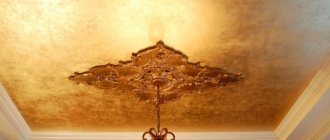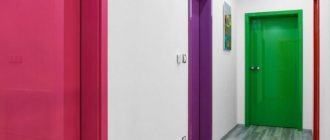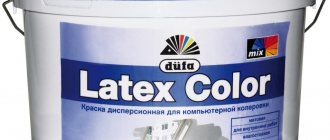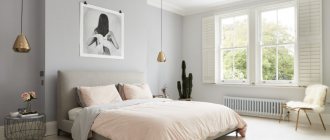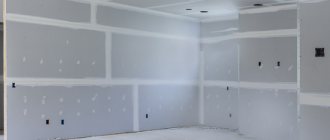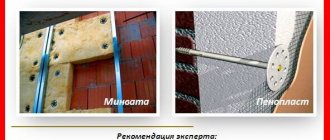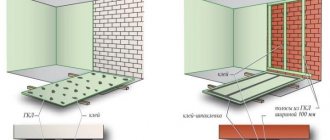What is structural (texture) paint?
They are often called textured paints, as well as a substitute or alternative to structural plasters. This is because the effect of applying them to the wall is reminiscent of this type of decorative structure. This is due to the use of special additives in structural paints that increase the viscosity of the paint and fillers characterized by a high degree of grain (different types of texture paints have different grains).
What might a wall painted with structural paint look like? It depends on how it was applied to the wall: we can create various patterns that resemble, for example, sand or pearls. We also note the fact that textured paint has a low level of leveling, which is reflected in the ease of its application - we do not need any experience to create decorative textures that are pleasing to the eye. Moreover, we can choose different shades, mix colors so that the wall can resemble concrete or wood.
Advantages of finishing
Decorative coating has gained popularity primarily due to its endless design possibilities. The same composition will look completely different on adjacent walls if you use special spatulas, rollers and other surface finishing tools for installation. In addition, among the undoubted advantages of decorative plaster, the following qualities are worth mentioning.
- Versatility. For any interior solution, you can choose suitable wall design options.
- Uniqueness. Unique textures are formed during the application of the finishing layer, giving the premises a distinct individuality.
- Thermal and noise insulation. The multicomponent composition and textured surface improve the heat-saving properties of the walls and provide acoustic comfort in the rooms.
- Durability. Decorative compositions are highly resistant to moisture, temperature changes, and solar ultraviolet radiation. High elasticity allows them to avoid cracking and increases service life.
- Biostability. Thanks to antiseptic and fungicidal additives, coatings are resistant to fungus and mold.
- Undemanding. To apply textured coatings, you do not need to perfectly level the walls, since the three-dimensional pattern perfectly hides minor surface defects.
- Practicality. Impeccable cleanliness is maintained by simple means - cleaning with a vacuum cleaner, washing with warm water, etc.
- Safety. The coatings for interior walls contain only environmentally friendly, hypoallergenic components.
The disadvantages of the decorative coating include the rather high cost and laboriousness of installation, but they are more than compensated for by the stunning aesthetics and long service life of the plaster.
Structural paint or plaster?
As mentioned above, such paint, after being applied to the wall, is very similar to structural plaster. Most often it is chosen primarily because of its easier application - the layer of paint and varnish is usually thinner than plaster, so we do not need to worry about applying it to the wall. The grain size of the plaster is also larger, which means that we will have to use more material.
The only advantage of structural plaster is that it can be applied to an unfinished wall without major preparation. Before applying textured paint, the wall must be primed, and especially large voids must be filled with a special leveling compound. But even taking into account these additional factors, painting walls with textured paints and varnishes is a cheaper solution than covering it with plaster.
Comparative cost of materials and work on their application
We have figured out the cost of a meter, but there is also the cost of the application work. And for some it’s not a problem to hang wallpaper themselves, while others have never even held a brush in their hands. Therefore, we found out the average cost of work for all the options we indicated and added it to the cost of the material. We took as an example the calculation of the cost of finishing one room with an area of 20 square meters on the floor, which on average is about 50 m2 of wall area.
And so, in table number 2 you can see the calculation of the cost of finishing the walls of such a room with both decorative plaster and various wallpapers or paints. We deliberately do not indicate any brands, so as not to advertise to anyone, only bare numbers.
What is the best structural paint?
To answer this question, you should consider the varieties of this material. Textured paint and varnish products differ primarily from the composition and effect that we get after using it:
- Structural acrylic paint - it is characterized primarily by high vapor permeability. Thanks to this, it makes the wall “breathe” and also protects it from moisture. This type is resistant to abrasion and cleaning, so the resulting effect on the walls will last longer;
- Structural latex paint - similar to the acrylic version, it also has satisfactory vapor permeability and protection from moisture. In addition, this material is durable and resistant to abrasion and scratching. It should also be noted that this paint is “economical”. This means that we won't need to buy too much of it to paint the wall;
- Polyacetene vinyl latex structural paint - it is not resistant to water, it also has low vapor permeability, so it should not be used where there is high humidity and temperature changes. The advantage of this type of paint is that it is the most durable.
Note that structural paint is sold in stores in four forms. The first is a dense mass that is immediately ready for use. Additionally, textured products are also available in paste and powder form - so they are not traditional in the sense of the word. They are added to standard acrylic paint, which acquires properties typical of textured paints.
However, that's not all. We can also purchase a hybrid product. What does it mean? The set contains both powder and paste. After combining these components, we obtain a ready-made composition for painting walls. This is a very good solution because it allows you to use different combinations by adjusting the paste to powder ratio. Thanks to this, we can achieve different effects, patterns and textures on the walls, which can be adjusted according to the desired effect.
Textured paints and varnishes also differ in the effects that are obtained after their use:
- Sand effect paint - allows you to create patterns on the wall that look like grains of sand;
- Paint with a grainy structure - allows you to make the texture of the wall a little rougher, containing many grains. Thanks to this, you can effectively hide uneven walls;
- Decorative structural paint - allows you to make artistic patterns on the walls;
- Deccoearl structural paint is also called 3D paint and has a characteristic three-dimensional effect on walls.
Of course, in addition to the resulting effects, we should choose a paint shade. There are a lot of them in stores today, so everyone can find something for themselves. It's also worth noting that we can separately purchase structural paint for ceilings and walls, as well as for exterior and interior types. External textured paint is characterized by increased density and graininess. Thanks to this, we can get a special, decorative facade of the building.
Components of plaster mixtures
The properties and purpose of a particular type of decorative plaster depend on its composition.
- Gypsum and lime are traditional fillers that ensure its strength, plasticity, good adhesion to the base, hygroscopicity and air exchange.
- Acrylic, silicone, latex are components that make the coating elastic and resistant to moisture.
- Silicate glass is a strengthening ingredient that makes the plaster resistant to moisture, temperature changes and reduces the adhesion of dirt. In addition, the fire resistance of the coating increases.
- Quartz or marble chips are elements that form an expressive texture and natural shine to imitate the surface of natural stone.
- Pigments and colors - to give the coating the desired shade.
- Cellulose, nylon and other fibers, metallized threads - to create specific decorative effects.
It is necessary to carefully study the description and characteristics of the selected mixture, which must indicate for which rooms or external walls the coating is intended, and under what conditions it can be used.
How to apply structural paint to a wall?
This type of paint and varnish material is quite versatile. Textured paint can be applied to various types of surfaces:
- plaster;
- concrete;
- tree;
- and drywall.
This type of paint and varnish products is characterized by high durability, abrasion resistance and the ability to cover numerous irregularities on the walls. Add to this the ability to create many different structures.
The procedure for applying structural paint is as follows:
- First you need to prepare the wall for painting. The surface should be cleaned and degreased. We can use water with added detergent. If there is a lot of dirt or it is ingrained, you can use ammonia to clean the surface (don’t forget to rinse it thoroughly afterwards);
- When the wall is dry, apply a primer (it should be adapted to the type of structural paint). If you notice large cavities on the wall, fill them with plaster mixture. Protruding layers of plaster or paint should also be removed. Don't worry about bumps - if they are large, just choose a paint with a very visible pattern;
- Before we start painting the walls, we should make sure that we have the right tool. We will need: a bucket, a drill, a float, a large bristle roller or brush and a texture roller. We can then move on to mixing the paint according to the manufacturer's instructions and applying it to the walls;
- Structural paint should be applied in one long stroke - only then will it apply evenly. Therefore, if a particular piece of wall is large, it should be divided into equal parts. Usually two layers are enough to cover the wall. Do not forget to mix the paint from time to time so that it does not lose its properties;
- If you want to create a specific pattern or texture on the wall surface, you can use what is called a texture roller. There is no need to soak it in paint - just walk it over the wall. You can create original patterns and ornaments on the walls using special brushes, sponges or various templates. The applied paint hardens in about 10 hours (after this time it is already possible to apply varnish), and after two days it is completely dry.
Interior use
Textured plaster is perfect for the bedroom because it consists of environmentally friendly elements. If the room is small, it is better to choose light colors and large patterns in order to visually increase the size of the room.
If you are thinking about what to choose for finishing your bathroom, decorative plaster is your choice. It has several advantages: vapor permeability, ease of maintenance and the ability to create a unique interior.
If you need textured plaster for the kitchen, it is better to choose acrylic, as it is environmentally friendly and is not afraid of water getting in during cleaning.
Acrylic synthetic
Acrylic resin is the main component of such decorative mixtures. Synthetic material provides properties such as good adhesion, moisture resistance and ductility. Thanks to the last two points, acrylic decorative plaster can create a wide variety of patterns in any room. It is also used for facade finishing without fear of precipitation.
Most often, acrylic decorative plasters are produced with a “lamb” (“bark beetle”) texture.
As for adhesion, it is remarkable only in the case of mineral bases. When working with other surfaces, you will have to look for a special primer designed for acrylic mixtures. Acrylic decorative plaster is sold in ready-made form, which greatly simplifies the work. Among the disadvantages, flammability is worth noting.
Since the finished coating will not allow moisture to pass through, care must be taken to combat mold and mildew. Most manufacturers already add additives to the material to prevent the formation of mold or mildew.
